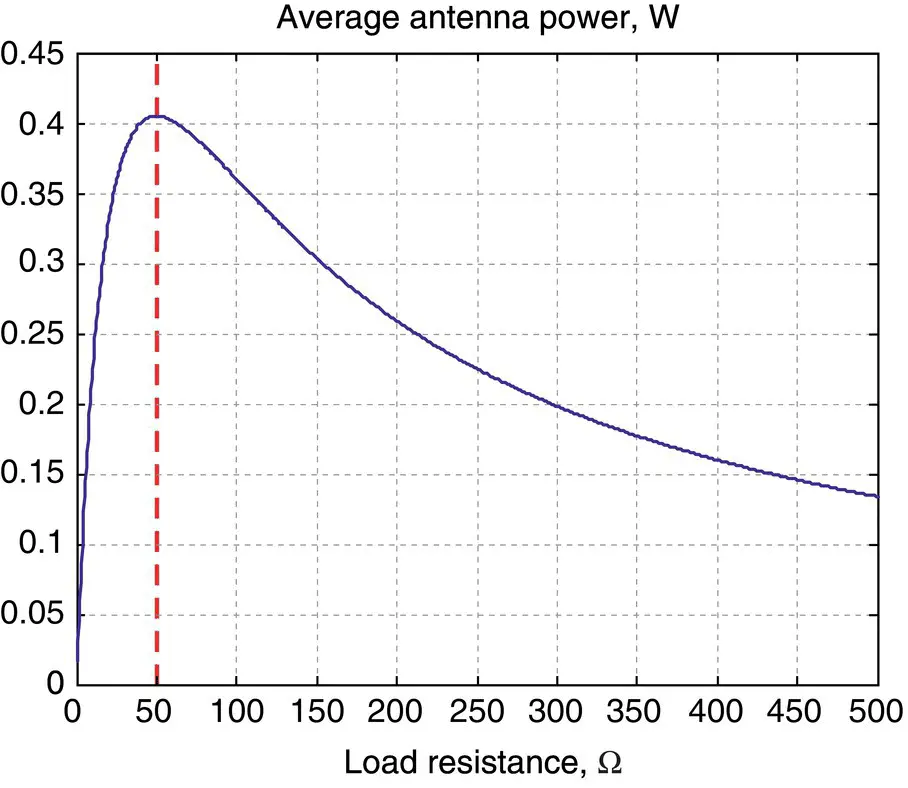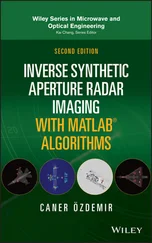Sergey N. Makarov - Antenna and EM Modeling with MATLAB Antenna Toolbox
Здесь есть возможность читать онлайн «Sergey N. Makarov - Antenna and EM Modeling with MATLAB Antenna Toolbox» — ознакомительный отрывок электронной книги совершенно бесплатно, а после прочтения отрывка купить полную версию. В некоторых случаях можно слушать аудио, скачать через торрент в формате fb2 и присутствует краткое содержание. Жанр: unrecognised, на английском языке. Описание произведения, (предисловие) а так же отзывы посетителей доступны на портале библиотеки ЛибКат.
- Название:Antenna and EM Modeling with MATLAB Antenna Toolbox
- Автор:
- Жанр:
- Год:неизвестен
- ISBN:нет данных
- Рейтинг книги:4 / 5. Голосов: 1
-
Избранное:Добавить в избранное
- Отзывы:
-
Ваша оценка:
- 80
- 1
- 2
- 3
- 4
- 5
Antenna and EM Modeling with MATLAB Antenna Toolbox: краткое содержание, описание и аннотация
Предлагаем к чтению аннотацию, описание, краткое содержание или предисловие (зависит от того, что написал сам автор книги «Antenna and EM Modeling with MATLAB Antenna Toolbox»). Если вы не нашли необходимую информацию о книге — напишите в комментариях, мы постараемся отыскать её.
Antenna and EM Modeling with MATLAB Antenna Toolbox — читать онлайн ознакомительный отрывок
Ниже представлен текст книги, разбитый по страницам. Система сохранения места последней прочитанной страницы, позволяет с удобством читать онлайн бесплатно книгу «Antenna and EM Modeling with MATLAB Antenna Toolbox», без необходимости каждый раз заново искать на чём Вы остановились. Поставьте закладку, и сможете в любой момент перейти на страницу, на которой закончили чтение.
Интервал:
Закладка:
The answer is given by the maximum power transfer theorem and found by solving the circuit in Figure 1.1. We assume that voltages and current are all functions of time and solve the circuit for an arbitrary time moment . First, the current is determined from the given voltage source υ g( t ) and the total resistance using the series equivalent,
(1.5a) 
This allows us to compute the (instantaneous) power delivered to the antenna based on
(1.5b) 
For a generator with fixed resistance R g, the load resistance determines the power P a( t ) at any time instant. Eq. (1.5b)is identical to the corresponding result at DC.
Example 1.2
Calculate and plot the average acquired antenna power when the generator with a periodic waveform υ g( t ) = υ g( t + T ) is characterized by the rms voltage and generator resistance given by
(1.5c) 
Solution: We use Eq. (1.5b)and average it over period T to obtain average power  . The result has a form:
. The result has a form:
(1.5d) 
Then, we plot the average antenna power as a function of the load resistance. The short MATLAB script given below accomplishes the task:
Rg = 50; % Generator resistance, Ohm Vg = 9; % Generator rms voltage, V RA = [0.01*Rg:0.01*Rg:10*Rg]; % Load resistance PA = RA*Vg^2./(Rg + RA).^2; % Average antenna power plot(RA, PA); grid on; title('Average antenna power, W') xlabel('Load resistance, Ohm')
This important result is given in Figure 1.2. We see that the load power does have a maximum at a particular value of the load resistance. Our next step will be to find this maximum.
It is instructive to find the maximum of the average antenna power analytically since it gives us insight into the optimization process. We treat P avgin Eq. (1.5d)as a function of R a, i.e. P avg= P avg( R a). From basic calculus it is known that a function has a maximum where its first derivative is zero. Consequently, differentiating P avgwith respect to R agives
(1.6) 

Figure 1.2 Average antenna power as a function of the antenna resistance for fixed V rms= 9 V , R g= 50 Ω.
The necessary and sufficient condition for Eq. (1.6)to hold, and thus maximizing the antenna power, is simply
(1.7) 
This result has a great practical value despite, or maybe thanks to, its simplicity. The maximum output radiated power is achieved when the antenna resistance is exactly equal to the internal resistance of the generator. In other words, the antenna is matched to the generated; it is called the matched antenna . The design of such an antenna over a frequency band of interest is called antenna matching . Such a design is a critical step, and it may be a great challenge for an RF engineer. It does not matter if the antenna radiates a sinusoidal or other periodic signal or a pulse; Eq. (1.7)holds in either case since it also maximizes power at any time instant.
However, it must be clearly stated that no more than 50% of the total generator power can be extracted even in this best case. This statement makes sense if we again examine the circuit in Figure 1.1with two equal resistors. We see that the power delivered to each resistor is obviously the same. Since R gis internal resistance, half of the total power is spent to heat up the generator.
Note:
The power maximum in Figure 1.2is relatively flat over the domain R a> R g; however, the power drops sharply when R a< < R g. This last condition should be avoided if at all possible. The corresponding example is given below.
Example 1.3
A transmitting antenna in a radio handset features a monopole antenna. It is connected to a sine wave generator that has the same basic form as Figure 1.1with an internal (generator) resistance of 50 Ω. The antenna has the radiation resistance of 50 Ω (which generates power loss in terms of electromagnetic radiation); its loss resistance is zero. The antenna, when properly matched to the power source, will radiate 50% of the total power. Now, a young RF engineer decides to “modify” the handset by cutting the monopole antenna and leaving only one‐third of its length, so that the antenna's radiation resistance is reduced to one‐ninth of its original value. How does this affect the radiated signal?
Solution:For a periodic AC signal the average antenna power is given by Eq. (1.5d), that is
(1.8) 
The ratio of the two power levels for the two antenna configurations does not depend on generator voltage, i.e.
(1.9) 
Thus, for the shorter antenna we will only achieve about 36% of radiated power compared to the original handset. In practice, this estimate becomes even much worse due to the appearance of a very significant antenna reactance as explained in the following text.
1.3 ANTENNA EFFICIENCY
After the antenna has been matched to the generator, the legitimate question to ask is how to find the antenna efficiency, E . Since R a= R r+ R L> R r, only a part of the power delivered to the antenna is really radiated; another part is dissipated in the antenna itself and makes it a heater.
The corresponding equivalent circuit of the antenna with losses includes two resistors in series: the radiation resistance R aand the loss resistance R L. Since the same current i ( t ) flows through both resistors at any time instant, we can find the radiation efficiency or simply the efficiency of the antenna in the form of the ratio of two powers: the radiated power and the total power delivered to the antenna . Those powers can either be given in terms of average values or by their instantaneous values. For example, at any time instant
Читать дальшеИнтервал:
Закладка:
Похожие книги на «Antenna and EM Modeling with MATLAB Antenna Toolbox»
Представляем Вашему вниманию похожие книги на «Antenna and EM Modeling with MATLAB Antenna Toolbox» списком для выбора. Мы отобрали схожую по названию и смыслу литературу в надежде предоставить читателям больше вариантов отыскать новые, интересные, ещё непрочитанные произведения.
Обсуждение, отзывы о книге «Antenna and EM Modeling with MATLAB Antenna Toolbox» и просто собственные мнения читателей. Оставьте ваши комментарии, напишите, что Вы думаете о произведении, его смысле или главных героях. Укажите что конкретно понравилось, а что нет, и почему Вы так считаете.












